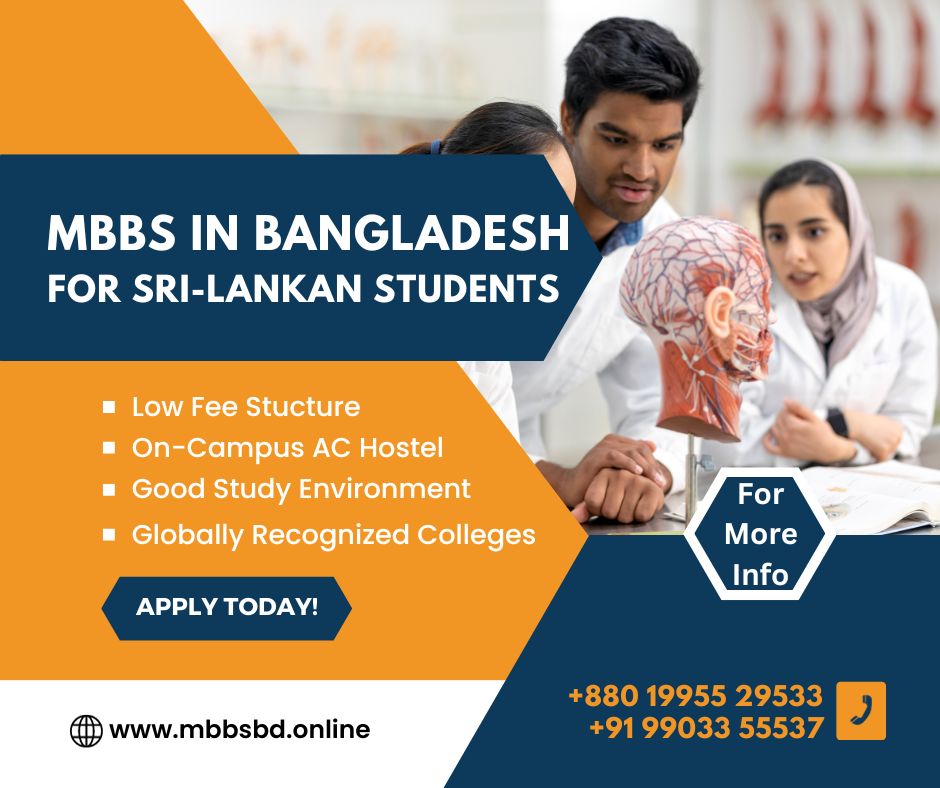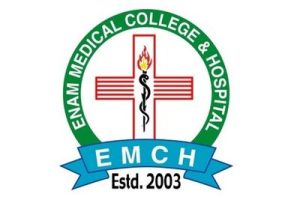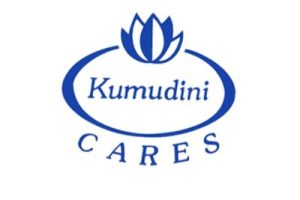MBBS in Nepal for Indian Students
Studying MBBS in Nepal for Indian students is a popular option due to various favorable factors, including cultural similarities, geographic proximity, and the quality of medical education. Here’s an overview focusing on key aspects:
MBBS in Nepal for Indian Students
Advantages of Studying MBBS in Nepal for Indian Students
Cultural Similarity: Nepal shares a lot of cultural and traditional similarities with India, making Indian students feel more at home.
No Language Barrier: The medium of instruction is English, and many people in Nepal also speak Hindi, easing communication for Indian students.
Quality of Education: Medical colleges in Nepal are known for their high educational standards, with curriculums and teaching methods similar to those in India.
No Visa Requirements: Indian students do not need a visa to study in Nepal, simplifying the admission and travel process.
Affordable Tuition Fees: Compared to private medical colleges in India, Nepal offers more affordable tuition fees for MBBS courses.
MCI Recognized Degrees: Degrees from most medical colleges in Nepal are recognized by the Medical Council of India (MCI), allowing graduates to practice in India after passing the Foreign Medical Graduates Examination (FMGE).
Clinical Exposure: Students gain considerable clinical exposure due to the diverse range of health issues and patient demographics in Nepal.
Admission Process and Eligibility
Academic Requirements: Candidates must have completed 10+2 or equivalent in science with Biology, Physics, Chemistry, and English. A minimum aggregate score (usually 50% or above) is required.
Entrance Exams: Some universities in Nepal require Indian students to qualify in entrance exams similar to the NEET exam.
NEET Requirement: For Indian students, qualifying NEET is mandatory for MBBS admission in Nepal.
Documentation: Essential documents typically include academic transcripts, NEET scorecard, passport-sized photographs, and identity proof.
Duration and Curriculum
The MBBS course in Nepal is of 5.5 years duration, including 1 year of internship, which is similar to the MBBS course structure in India.
Recognition and Approvals
MBBS degrees from Nepal are recognized by the MCI, WHO, and other international medical bodies.
Graduates need to clear the FMGE to practice in India.
Cost of Living and Expenses
The cost of living in Nepal is relatively lower compared to many other countries, making it a budget-friendly option for international students.
Accommodation and food expenses are generally affordable, with many options available near medical colleges.
Challenges for Indian Students
Adapting to a new education system and environment, despite cultural similarities, can be challenging.
The high altitude and weather of some parts of Nepal might take some time to get used to.
MBBS in Nepal is a viable option for Indian students due to its numerous advantages like cultural proximity, no language barrier, affordable tuition fees, and MCI recognized degrees. However, students should thoroughly research individual colleges, understand their admission processes, and be prepared for a different, yet somewhat familiar, educational experience.
Studying MBBS in Nepal for Indian students presents a viable and appealing alternative to pursuing a medical career, especially for those who face challenges in securing seats in government medical colleges in India. Here are some key highlights and advantages of choosing Nepal for MBBS studies:
Study MBBS in Nepal
Top Advantages of Studying MBBS in Nepal for Indian Students
Cultural Affinity: Nepal’s culture is a harmonious blend of Hindu and Buddhist elements, offering a comfortable environment for Indian students.
Reputable Universities: Medical institutions in Nepal are recognized by the National Medical Commission (NMC), ensuring a globally recognized degree.
Course Duration: The MBBS program spans five and a half years, including an internship, with a curriculum similar to Indian standards.
Qualified Faculty: Many teaching staff in Nepal are Indian professors, facilitating ease in language and teaching methodologies.
Comfortable Living: Similar food habits and lifestyles make Nepal a comfortable study destination for Indian students.
Language Ease: The absence of a mandatory language proficiency test and instruction in English or Hindi removes language barriers.
Visa-Free Travel: Indian students can travel and study in Nepal without a visa, simplifying the admission process.
Internship Opportunities: After four years of study, students can engage in internships in various medical establishments in Nepal.
Scholarships: To assist students from middle-class families, medical universities in Nepal offer scholarship programs.
Affordable Living Costs: Living expenses in Nepal are lower than in many other countries, making it financially viable for students.
MBBS in Nepal
Flexible Payment Options: Some universities allow the payment of tuition fees in instalments.
Reasonable Tuition Fees: Compared to private Indian medical institutes, Nepal offers more affordable MBBS programs.
Global Recognition: MBBS degrees from Nepal are recognized worldwide, facilitating global career opportunities.
Advanced Technologies: Medical colleges in Nepal are equipped with modern medical technologies and facilities.
Eligible for NMC Screening: Graduates can appear for NMC’s screening test to practice in India.
Educational System Similarities: The medical curriculum in Nepal closely mirrors that of Indian medical universities.
Education System in Nepal
– Key Facts
The curriculum and study materials in Nepal’s medical colleges align closely with those used in India.
Practical training is provided in a manner similar to Indian medical education, beneficial for students planning to practice in India.
Several medical colleges in Nepal are operated or managed by Indian professionals, ensuring a familiar educational environment.
Medical Colleges in Nepal
B.P. Koirala Institute of Health Sciences
Chitwan Medical College
College of Medical Sciences Bharatpur
Dhulikhel Medical Institute
Institute of Medicine Nepal
Kathmandu Medical College
Kathmandu University School of Medical Sciences
Manipal College of Medical Sciences
Manmohan Memorial Institute of Health Sciences
Nepal Medical College
Tilganga Institute of Ophthalmology
Post-Graduation Options after MBBS in Nepal
Graduates can pursue postgraduate medical education either in Nepal or other countries. Various specializations are offered, including MD/MS in Forensic Studies, Masters in Physiology, Pharmacology, Community Medicine, Microbiology, ENT, Pathology, Surgery, Anatomy, etc.
Fee Structure in Nepal
The fee structure in Nepalese medical colleges varies but is generally more affordable compared to private medical colleges in India. It’s advisable to check the latest fee details and exchange rates before initiating the admission process.
Key Considerations for MBBS in Nepal
The medium of instruction is English, accommodating international students.
Hostel and private accommodations are available.
Most medical colleges are approved by NMC and WHO.
Age criteria for admission range between 17 to 25 years.
MBBS Admission and Eligibility
Eligibility criteria include a minimum age of 17, completion of 10+2 with core science subjects, and qualifying entrance exams.
Admission procedures may vary across universities, with some requiring entrance exams.
Indian students need an eligibility certificate from NMC.
Challenges and Considerations
While there are many advantages, students should also consider potential challenges such as differences in teaching styles, limited hands-on surgical practice during internships, and language adjustments.
In conclusion, MBBS in Nepal offers a balanced mix of quality education, cultural familiarity, and financial feasibility, making it an attractive option for Indian medical aspirants.
Life as a Student during MBBS in Nepal
Holistic Education Approach: Nepalese medical universities focus on the overall development of students, promoting a balance between academic rigor and extracurricular activities.
Practical Training: Internships provide practical training, although hands-on surgical experience might be limited.
Infrastructure and Atmosphere: With infrastructure and amenities tailored for students’ needs, Indian students usually find it comfortable to adapt to life in Nepal.
Faculty Support: The presence of Indian faculty members aids in easier communication and better academic support.
Internship Regulations: Medical students must adhere to internship rules set by the Nepal Medical Council, ensuring quality and relevance in practical training.
Syllabus for MBBS Course in Nepal
The MBBS curriculum in Nepal is divided into three phases: Pre-Clinical, Para-Clinical, and Clinical.
Pre-Clinical Phase (1st & 2nd Semester):
Clinical exposure, Communication Skills, Integrated Basic Medical Science, Community Medicine.
Para-Clinical Phase (3rd to 5th Semesters):
Surgery, Internal Medicine, Gynecology, Forensic Medicine, Obstetrics, Paediatrics, Community Medicine.
Clinical Phase (6th to 9th Semesters):
Detailed study in Surgery, Internal Medicine, Orthopaedics, Gynaecology, ENT, Paediatrics, Psychiatry, Dermatology, Radiology, etc.
Benefits of Selecting MBBS in Nepal
Similar Education Pattern: The curriculum closely mirrors that of Indian medical education, easing the transition for Indian students.
Quality of Education: The medical colleges are known for their high-quality education and experienced faculty.
Cost-Effectiveness: Tuition fees and living costs are generally lower than in India.
Geographical Proximity: Nepal’s proximity to India makes travel convenient and cost-effective.
Visa-Free Policy: Indian students enjoy the benefit of visa-free travel and study in Nepal.
MBBS in Nepal for Indian Students
Safe and Inclusive Environment: Nepal provides a safe and culturally inclusive environment for both male and female students.
NMC and WHO Recognition: Most medical institutions are recognized by the NMC and WHO.
Eligibility Criteria: Students need to meet certain age and academic requirements.
Internship Opportunities: The one-year internship is integral to the MBBS program, providing essential practical experience.
Considerations and Challenges
Language and Communication: Initial language barriers, especially with local dialects, might pose challenges.
Internship Limitations: Internships may not always offer extensive hands-on experience.
Cultural Adaptation: Adapting to local customs and practices might take time for some students.
Fortune Education
MBBS in Nepal stands out as a practical and accessible option for Indian students, offering quality education, cultural familiarity, and a supportive learning environment. While there are challenges, the advantages often outweigh them, making Nepal a preferred destination for medical studies. Students are advised to thoroughly research colleges, understand the curriculum, and prepare for the cultural and educational landscape of Nepal to make the most of their medical education journey.
MBBS in Bangladesh
Studying MBBS in Bangladesh has become a popular option for students from various countries, including India, due to its affordable education, quality of teaching, and cultural similarities. Here’s a comprehensive overview of pursuing an MBBS in Bangladesh:
Why Choose Bangladesh for MBBS?
Quality of Education: Medical colleges in Bangladesh offer a high standard of medical education, comparable to other renowned medical schools globally.
Affordable Tuition Fees: Compared to medical education in countries like the USA, UK, or even India, Bangladesh offers a more affordable option without compromising on the quality of education.
WHO and NMC Recognition: Most medical colleges in Bangladesh are recognized by major international bodies like the World Health Organization (WHO) and the National Medical Commission (NMC) of India.
Medium of Instruction: English is the medium of instruction in most medical colleges, making it easier for international students to adapt.
Cultural Similarity: For students from India and neighboring countries, the cultural similarities in Bangladesh make it easier to adapt to the environment.
Clinical Exposure: Students get extensive clinical exposure due to a high density of population and varied medical cases.
No Language Barrier: Since English is widely used in medical education, there is no need for international students to learn a new language for their studies.
Admission Process and Eligibility
Eligibility Criteria: The candidate should have completed 10+2 or equivalent with Physics, Chemistry, and Biology as main subjects and have achieved a minimum aggregate score, often around 50% or more.
Entrance Exams: Some colleges may require scores from medical entrance exams, similar to the NEET exam in India.
Application Process: Students must apply directly to the medical colleges or through authorized representatives. The application process usually involves submitting academic transcripts, proof of NEET (for Indian students) scores, and other necessary documents.
Visa Process: International students must obtain a student visa for studying in Bangladesh. The process typically involves submitting an acceptance letter from the college along with other documentation.
Duration and Curriculum
The MBBS course in Bangladesh is usually 5 years, followed by a compulsory internship year.
The curriculum closely follows standards similar to Indian medical colleges, especially due to the MCI (now NMC) guidelines.
Recognition and Approval
Graduates from Bangladeshi medical colleges are eligible to sit for various international medical licensing exams, including the FMGE (Foreign Medical Graduates Examination) in India, USMLE (USA), PLAB (UK), and others.
It’s important to ensure that the chosen college is recognized by the relevant medical councils and boards.
Post-Graduation Opportunities
After completing MBBS, students can opt for postgraduate courses either in Bangladesh or other countries.
They can also return to their home country and practice medicine after passing the required medical licensing examinations.
Challenges and Considerations
Adapting to a new country’s environment and culture may be challenging for some students.
Students should be aware of the living costs and accommodation arrangements in Bangladesh.
MBBS in Bangladesh offers a balanced combination of affordable tuition fees, quality education, and international recognition, making it a favorable option for many students aspiring to become doctors. However, it’s crucial for prospective students to conduct thorough research on the colleges, understand the visa and admission processes, and prepare for the educational and cultural environment in Bangladesh.







